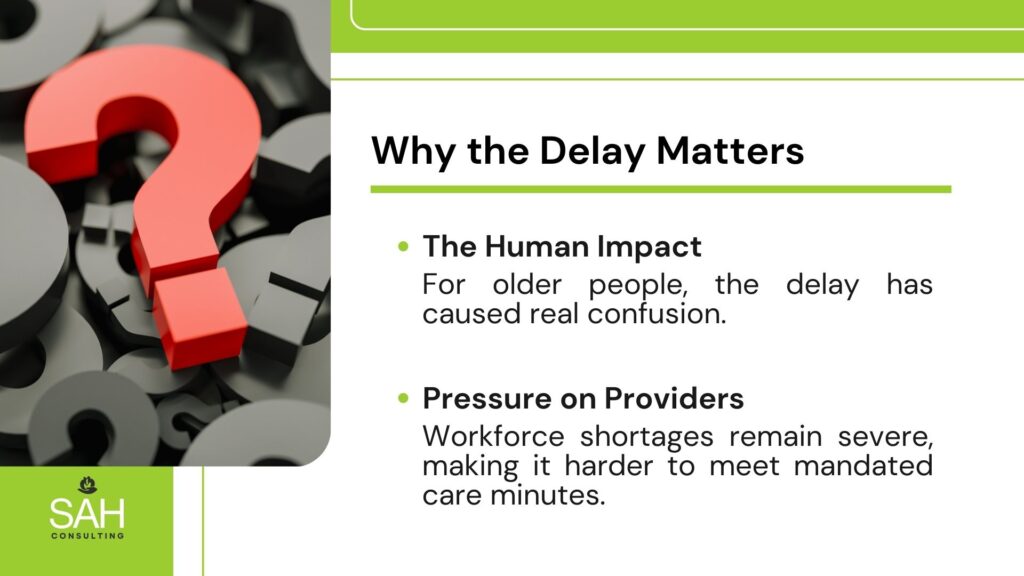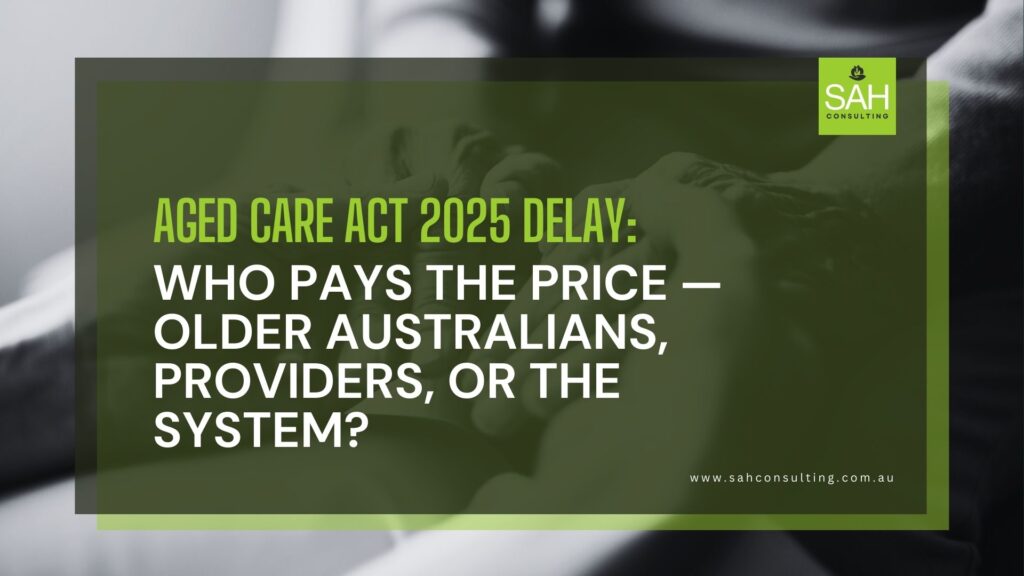The start date for the new Aged Care Act has been pushed from 1 July to 1 November 2025. The delay may give the government more time to get its systems ready, but for many, it has only deepened uncertainty. Older Australians, families, and providers are left asking: What do these Australian aged care reforms really mean for them?
Why the Delay Matters
Sector leaders say the hold-up was less about providers and more about government systems. Without the change, there was a real risk that home care providers wouldn’t get paid in July or August. That would have been untenable. Now the focus is on ensuring the government’s ICT systems, payment processes, and vendor testing are ready by 1 November.
The rules for the Act were released on 1 August, but still need to be tabled in Parliament. Until then, lawyers and providers can’t fully commit, which adds another layer of doubt.
The Human Impact
For older people, the delay has caused real confusion. Some received government letters about changes starting 1 July, only to be told later that that wasn’t the case. Others saw new pricing lists rolled out, then pulled back. Advocates say trust is eroding as people wonder when their rights and the expanded Support at Home program will actually arrive.
Families are also carrying more of the load. With nearly 88,000 still waiting for Home Care Packages, many are forced to step in as unpaid carers. Hospitals, meanwhile, are seeing a rise in “bed block” — thousands of older patients staying longer than needed simply because there’s nowhere else to go.
Pressure on Providers
Providers aren’t spared either. Workforce shortages remain severe, making it harder to meet mandated care minutes. In-home care, the 10% cap on care management costs and new co-contribution settings have raised fears that complex clients may miss out on services.
Residential providers face a different problem. Building new beds now costs about $600,000 each, but returns don’t stack up. Many operators want to build, but simply can’t make the numbers work. That leaves existing homes stretched while demand climbs.

Priorities Before November
Sector leaders say three things must happen quickly:
- First, the two aged care bills must pass Parliament, and the rules need to be formally tabled. Until this happens, providers are left in limbo. Lawyers can’t sign off on contracts or compliance because there’s no legal certainty. Having the rules released in August gave some relief, but until they become law, there’s always the risk of last-minute changes.
- Second, communication with older people and staff must improve. The delay has created widespread confusion. Many older Australians received government letters telling them the new system would start in July, only to be told later it had been pushed back. Some providers had already updated pricing lists, only to retract them.
- Finally, there must be safeguards to prevent unintended harm. One concern is the 10% cap on care management fees. Providers warn that complex clients might be turned away because their care needs can’t be properly managed within that limit. There are also fears that new co-contribution rules could discourage people from seeking help in the first place.
Without action on these fronts, the 1 November rollout risks being messy.
The Bigger Picture
Beyond the immediate issues, aged care is facing a capacity crunch. Beds are scarce, dementia demand is rising, and funding is tight. If reforms don’t tackle duplication and compliance, resources will continue to be wasted on paperwork instead of care.
The Productivity Commission has called for streamlined regulation, while providers urge urgent investment in the workforce, dementia services, and digital tools. But with talk that some changes may be delayed until after the 2028 election, there are concerns that another decade of red tape could be locked in.
Where to From Here?
The delay may have eased pressure on providers, but it hasn’t stopped the rising tide. Hospitals remain crowded, families are stretched, and providers are worried about viability.
The government has until November to prove its systems are ready, and until then, the sector waits anxiously. The goal of the Australian aged care reforms is to deliver dignity, clarity, and better services for older people. Whether that promise is met now depends on what Canberra does next.
Do you need expert support navigating the changes? The aged care sector is facing one of its most significant transitions in years, and staying ahead of the reforms can be challenging. At SAH Consulting, we work closely with providers to simplify the new Support at Home registration process and ensure full compliance with evolving regulations. From preparing policy documentation to guiding applications, our consultants make the journey easier so you can focus on delivering quality care.
